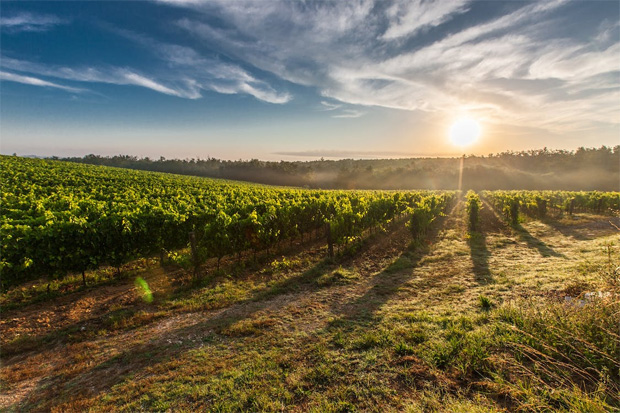A Quick Guide to Brunello Wine

A Quick Guide to Brunello Wine
If you want to learn about Brunello wine – one of Italy’s most prestigious wines, you’ve come to the right place. In this article, we are going to have a look at what makes a Brunello wine. Let’s get started!
- Winemaking Rules for Brunello Wine
What is the typical style of Brunello wine? The disciplinare describes where the vineyards for certain wines must be grown, where the wine must be produced, which grape varieties are allowed and in which percentages, the winemaking process and gives quality standards to follow in terms of the wine’s colour, alcohol content, flavours and aromas. The Brunello disciplinare goes back to the very first Brunello wines in the 1880s and the same general guidelines are followed today.
The original guidelines were developed by a father and son duo – Ferruccio Biondo and Tancredi Biondi-Santi. The Biondi-Santi Brunello was made from pure Sangiovese which was very rare at this time when it was standard that farmers used to grow various grapes to blend into house wines. The local version of these grapes is called Brunello which means “little dark one” as the grapes are small and dark. To soften the flavours, Biondi-Santi introduced destemming of the grapes to reduce the tannins in the wine. Without the stems that contain harsh tannins, the levels of tannins could be controlled to an enjoyable amount.
A powerful Brunello wine needs to be aged for at least four years to develop its complex and remarkable flavours. This ageing period includes a minimum of two years in oak and four months in the bottle. Brunello has the longest minimum ageing period in Italy with Brunello Riserva requiring even longer periods. Brunello wine is famous for having an incredible ageing potential and can continue to improve for 30 years or more.
The classic barrels used for Brunello winemaking are large Slavonian oak barrels which allow slow contact with oxygen which helps preserve the fruity flavours of the Sangiovese grapes. In modern winemaking, Brunello is sometimes aged in smaller French oak barriques or sometimes in a mix of the above to create flavours like black pepper, smoke and vanilla.

- Where is Brunello Wine Made?
8 million bottles of Brunello wine are produced each year in Toscana, 40km from the south of the city of Siena. The territory is almost square that measures 15x15km. The altitude above sea level varies along the territory – from 120m up to 650m. The area planted with Sangiovese grapes is around 1,067 hectares. The climate in this area is dry and Mediterranean so winters are warm and mild and the summers hot. Due to the high elevation, the temperature fluctuates a lot between night and day which promotes a high aromatic intensity and complexity in the grapes. The windy conditions help promote good air circulation which protects the vines from diseases. In spring is when rainfall is expected and when the soil accumulates a water reserve ready for the warm, dry weather in the summer. Then in autumn when the weather is still sunny and dry but cool, it’s the perfect condition for the grapes to ripen.

You can find a range of Brunello wines available to purchase from Independent Wine and learn more interesting information about Brunello on their website here too. As always, you can enjoy free next day delivery in the UK when shopping with Independent Wine.
Collaboration.




